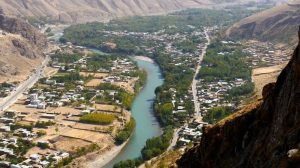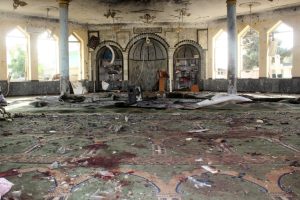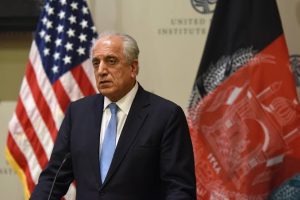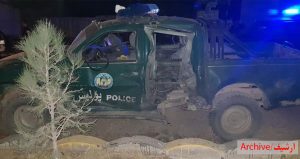The National Champion…

MEP: Fifteen years ago in the first suicide attack in Afghanistan, Ahmad Shah Massoud, a national hero has been killed in Takhar province by two Arab citizens who had introduced themselves as journalists.
Today 8 September 2016 is the fifteenth anniversary of the assassination of Massoud, the national hero.
Massoud an Afghan political and military leader was a powerful military commander during the resistance against the Soviet occupation between 1979 and 1989 and in the following years of civil war, during which time he became known as the Lion of Panjshir as he was born in the province (Panjshir) on September 2, 1953.
He began studying engineering at Polytechnical University of Kabul in the 1970s, where he became involved with fundamentalist Muslim anti-communist movements around Burhanuddin Rabbani, a leading Islamist.
Massoud’s father, Dost Mohammad Khan, was a colonel in the Royal Afghan Army. From his native Panjshir, his family moved briefly to Herat and then to Kabul, where Massoud spent most of his childhood.
Executive power and the discipline had lightened him the dearest and the most loving among his friends and this performance also gave him dignity.
How Massoud became interested in politics, he said: “My father had many friends who were familiar with policy. They came to our home and had many discussions about the politics of the region and the world. It was natural that those talks and meetings were in my role.”
Massoud attended the renowned Franco-Afghan Lycée Esteqlal. Regarded as a gifted student, Massoud spoke Dari, Pashto, Urdu and French and had good English reading skills.
Following the 1979 Soviet invasion and occupation of Afghanistan, Massoud devised a strategic plan for expelling the invaders and overthrowing the communist regime. The first task was to establish a popularly based resistance force that had the loyalty of the people.
The second phase was “active defense” of the Panjshir stronghold, while carrying out asymmetric warfare. In the third phase, the “strategic offensive”, Massoud’s forces would gain control of large parts of Northern Afghanistan. The fourth phase was the “general application” of Massoud’s principles to the whole country, and the defeat of the Afghan communist government.
From the start of the war, Massoud’s mujahideen attacked the occupying Soviet forces, ambushing Soviet and Afghan communist convoys travelling through the Salang Pass, and causing fuel shortages in Kabul.
The Soviets mounted a series of offensives against Panjshir. Between 1980 and 1985, these offensives were conducted twice a year. Despite engaging more men and hardware on each occasion, the Soviets were unable to defeat Massoud’s forces.
In 1982, the Soviets began deploying major combat units in the Panjshir, numbering up to 30,000 men. Massoud pulled his troops back into subsidiary valleys, where they occupied fortified positions. When the Soviet columns advanced onto these positions, they fell into ambushes.
When the Soviets withdrew, Afghan army garrisons took over their positions. Massoud and his Mujahideen forces attacked and recaptured them one by one.
In 1983, the Soviets offered Massoud a temporary truce, which he accepted in order to rebuild his own forces and give the civilian population a break from Soviet attacks.
He put the respite to good use. In this time he created the Shura-e Nazar (Supervisory Council), which subsequently united 130 commanders from 12 Afghan provinces in their fight against the Soviet army.
This council existed outside the Peshawar parties, which were prone to internecine rivalry and bickering, and served to smooth out differences between resistance groups, due to political and ethnic divisions. It was the predecessor of what could have become a unified Islamic Afghan army
To organize support for the Mujahideen, Massoud established an administrative system that enforced law and order (nazm) in areas under his control.
Panjshir was divided into 22 bases (qarargah) governed by a military commander and a civilian administrator, and each had a judge, a prosecutor and a public defender.
Massoud’s policies were implemented by different committees: an economic committee was charged with funding the war effort. The health committee provided health services, assisted by volunteers from foreign humanitarian non-governmental organizations, such as Aide médicale international. An education committee was charged with the training of the military and administrative cadre. A culture committee and a judiciary committee were also created.
With the defeat of the Soviet-Afghan attacks, Massoud carried out the next phase of his strategic plan, expanding the resistance movement and liberating the northern provinces of Afghanistan.
In August 1986, he captured Farkhar in Takhar Province. In November 1986, his forces overran the headquarters of the government’s 20th division at Nahrin in Baghlan Province, scoring an important victory for the resistance.
This expansion was also carried out through diplomatic means, as more Mujahideen commanders were persuaded to adopt the Panjshir military system.
The Soviet army and the Afghan communist army were mainly defeated by Massoud and his Mujahideen in numerous small engagements between 1984 and 1988. In 1989, after describing the Soviet Union’s military engagement in Afghanistan “a bleeding wound”, Soviet General Secretary Mikhail Gorbachev began a withdrawal of Soviet troops from the nation. On February 15, 1989, in what was depicted as an improbable victory for the Mujahideen, the last Soviet soldier left the nation.
The Mujahideen were involved in the civil war that the Taliban emerged and seized parts of the country; Massoud also had fierce battle with the Taliban until September 9, 2001.
After the creation of the government of Hamid Karzai, the title of national hero to Ahmad Shah Massoud was given and his assassinated week was also named as “martyrs” week.




